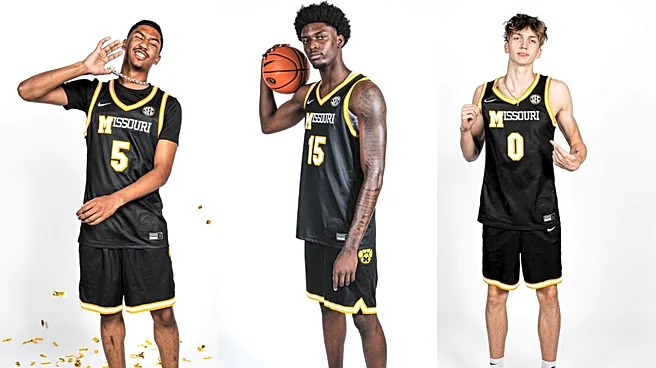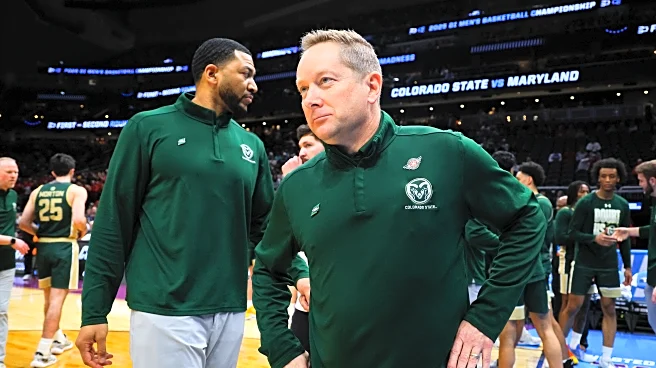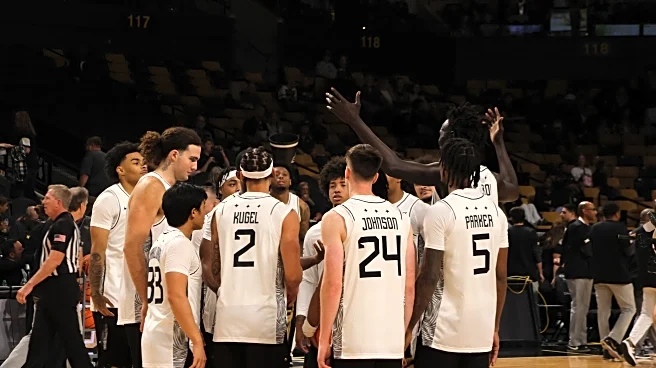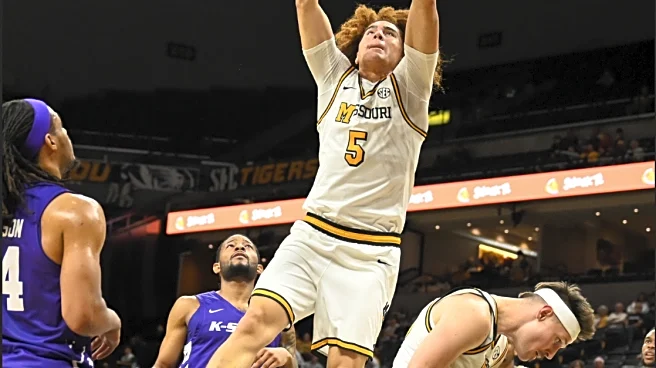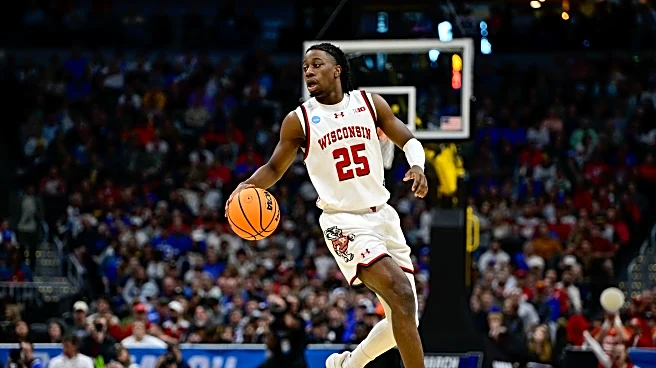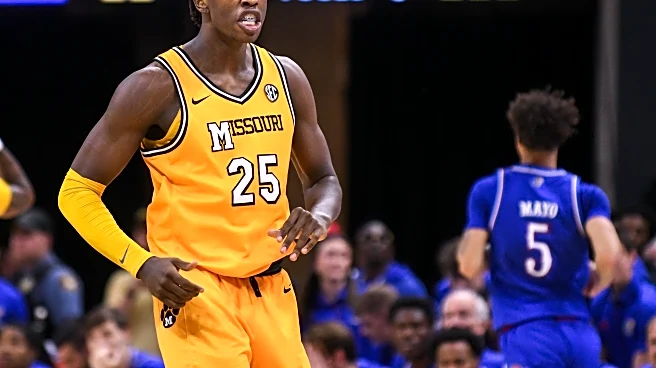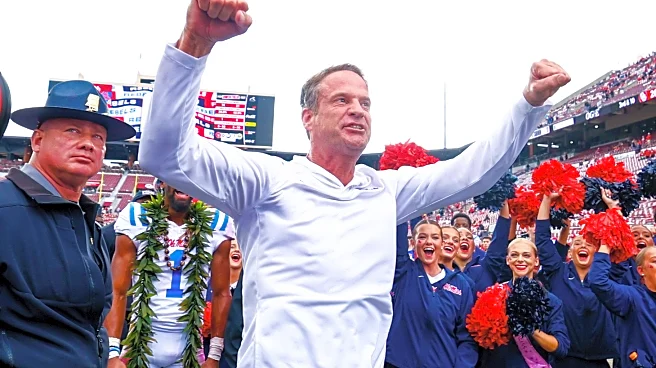It’s easy to forget, but Missouri’s start to the 2026 recruiting cycle hit a bit of turbulence back in May.
First, John Burroughs center Sheek Pearson committed to Marquette and would later reclassify to join
the Golden Eagles this season. And just three days later, JJ Andrews, a long-time priority who seemed poised to pick the Tigers, opted to stay home and join up with Arkansas. Those developments coming in quick succession made it easy to wonder how the Tigers might bounce back.
Well, coach Dennis Gates and his staff did more than rally.
When Aidan Chronister committed in late September, the Tigers essentially wrapped up roster fortifications until the transfer portal opens this spring. Had MU secured the services of Tristan Reed, who committed to Mississippi State on Saturday, the program would have likely locked in a top-10 recruiting class. Still, the three-man group includes a pair of five-star talents in Jason Crowe Jr. and Toni Bryant to go with a long-term asset Aidan Chronister.
With that trio in hand and the board officially emptied of targets, it’s worth reviewing the Tigers’ handiwork.
Stacking it up
Missing out on Reed means the Tigers’ haul potentially won’t crack the top 10 this cycle. Based on historical data, it’s likely that MU exits the early signing period with class ranked between No. 13 and No. 20 nationally. Where it ultimately lands still has a measure of fluidity.
On paper, Gates still has three vacancies he can fill once March rolls around. Depending on how it uses those slots and the rebuilds at other programs, the Tigers could slip in the rankings.
How? Portal additions might increase the raw class score, but transfers tend to lower its average recruit rating. That’s what happened in 2024, when MU’s five-man transfer class nudged the Tigers to No. 14 in the 247Sports’ overall class rankings. You can also see where that class — and MU’s other classes that finished in the top 25 nationally — illustrated in the scatter plot below.
MU finds itself in a band of teams where quality, measured in average recruit rating, is robust. However, quantity is the hangup. Suppose MU landed any of Jashawn Andrews, Ethan Taylor, or Sheek Pearson. That single addition would have been enough for this recruiting class to appear in the upper right quadrant, home to some of the best assemblages of talent in the last 15 years.
Now, this trio does have a case as the best crop of talent that MU has amassed since the program moved to the SEC.
Yes, the 2017 class featured the No. 1 recruit nationally and two other top-40 prospects, but Cuonzo Martin rounded it out with three players — Blake Harris, CJ Roberts and Javon Pickett — outside the top 100. Meanwhile, recruiting services weren’t ranking transfers, meaning we can only speculate about what impact Kassius Robertson’s presence would have on MU’s finish. Two years ago, Annor Boateng made for a nice headliner, but the bulk of the ’24 class landed between Nos. 70 and 120 in the composite rankings.
Zooming out to review the top-line benchmarks, which you can see in the graph above, for every class since 2012 leaves little doubt that the 2026 class is the best group to sign up in the past 15 years. Had MU found a way to wrangle one of Ethan Taylor or JaShawn Andrews, each of whom is a top-25 talent, the resulting quintet would have been the program’s best since Quin Snyder hauled in Ricky Paulding Jr., Travon Bryant, and Arthur Johnson as part of the No. 2 class way back in 2000.
The big theme: building for balance
Crowe is arguably the best shot creator this cycle. Bryant excels as a rim runner, cutter, and lob threat on the roll. Aidan Chronister’s shooting keeps the floor balanced and gaps open. What’s missing? A young big man capable of shoring up interior scoring, especially around the block.
Each of MU’s signees has a nail to hang their game on as they eye roles and early minutes, but they also play off each other well. That should lend Dennis Gates flexibility to craft lineups that accentuate their strengths.
It’s also a contrast to the class we saw Gates assemble two years ago, one stocked with prospects whose frames, athletic traits, and instincts were more ideally suited toward the defensive end of the floor. Even now, we’re waiting to see what kind of tangible progress Boateng, T.O. Barrett, and Trent Burns have made in live action.
Rethinking the blueprint
Scoring a pair of top-25 prospects is undoubtedly a boon, but it’s also fair to wonder if Missouri missed an opportunity to deepen its roster—particularly in the front court. This cycle, three post players ranked in the top 80 of 247Sports’ composite index emerged from the Tigers’ recruiting footprint. None chose Columbia. Landing one of Taylor, Pearson, or Reed would have signaled a turn toward youth and long-term upside.
For the third straight spring, Missouri will browse the transfer portal. The market for big men, whether seasoned veterans or underclassmen seeking a reboot, is notoriously expensive and moves quickly. Historically, MU has been budget-conscious in these pursuits, renting depth pieces for short-term needs.
The implications go beyond the PR buzz of a top-10 class. Data shows a tangible on-court benefit to landing elite freshmen.
Now, consider teams whose recruiting classes ranked between Nos. 11 and 20.
Their baseline dips. These programs averaged three fewer wins, fell outside the top 30 in efficiency, and reached the NCAA Tournament only half as often—a miss rate twice that of teams with elite classes.
And reviewing distribution curves makes the difference starker. Roughly 23 percent of teams ranked Nos. 11–20 won fewer than 14 games, compared to just 12 percent among top-10 classes.
What about programs that rely almost entirely on transfers?
Portal-heavy teams typically fare slightly better than those with mid-tier recruiting classes but trail those with top-10 groups.
About 70 percent of transfer-built rosters win between 15 and 25 games—a stabilizing outcome that minimizes collapse risk—but only 16 percent exceed 26 wins, nearly identical to the Nos. 11–20 range.
The takeaway: building through the portal isn’t a hidden efficiency. While it can prevent a rebuild from bottoming out, it rarely propels a team into deep March runs. N.C. State’s 2024 Final Four appearance remains the lone example of a portal-heavy roster advancing past the Sweet 16. Half of such teams don’t even make the tournament.
The real key? Retention.
Over the past decade, continuity has proven to be a defining trait of deep tournament runs. Minutes continuity tracks what share of a team’s minutes come from returning players, capturing true lineup consistency beyond roster carryover. Only two national champions—Virginia in 2019 and Baylor in 2021—returned less than half their minutes from the prior season. And while there isn’t a statistically significant relationship, it’s easy to see continuity grows with each round of the NCAA Tournament.
As Matt Watkins noted at Rock M Plus, keeping players—freshmen or transfers—for two years creates the foundation for sustained success. Missouri has already found value in that model through Tamar Bates and Mark Mitchell. This season, UCLA transfer Sebastian Mack represents the next test case, a former top-60 prospect whose shooting off the catch could determine MU’s offensive ceiling.
And that circles back to missing out on frontcourt targets close to home.
Mining high school talent might be the sport’s next market inefficiency. As programs lean on the portal or look overseas, more prospects ranked between 30th and 90th become available. Those recruits often form the backbone of top-10 classes, and they cost less NIL capital — allowing programs to reallocate funds toward player retention.
Reed exemplifies the shift. Ranked 80th nationally, the St. Louis native took five official visits this fall, including an early stop at Mizzou. Instead of committing quickly, he leveraged his recruitment to maximize NIL value. Michigan State prioritized Taylor, Ohio State paid heavily to retain five-star wing Anthony Thompson, and Missouri stood pat. When Mississippi State lost two targets, it likely freed the budget to outbid MU for Reed’s services.
Reed would have given Missouri an athletic rim finisher and rebounder—an ideal developmental piece who could’ve become a multi-year starter. Instead, a conference rival might benefit.
Will that setback derail the program? Probably not. But landing Reed and Chronister would’ve solidified MU’s core and provided better cost control heading into 2026. Oh, continued the program’s patient effort to build a core that amasses a hefty supply of minutes that carries over each season.
That’s an approach more high-major programs will need to consider. Many schools tout a “pro model” of roster construction, often by hiring general managers. Yet even NBA franchises have adjusted their blueprints. With punitive salary aprons and incentive-heavy extensions under the CBA, teams increasingly prioritize drafting and developing stars rather than splurging in free agency.
College basketball, though not bound by a salary cap, mirrors that logic. The most sustainable strategy is to invest in youth, develop it, and spend NIL resources to retain it.
This concept isn’t groundbreaking, but applying it to Missouri’s 2026 efforts provides a clear metric for success. Signing a pair of five-stars was a win. But the true measure of progress will be whether the Tigers can keep those players long enough to turn promise into permanence.
TL;DR Summary
When all is said and done, Missouri’s 2026 class might not crack the top 10, but it still checks critical boxes. The group blends complementary skill sets — a dynamic shot-creator, a vertical finisher, and floor-spacing balance — that should give Gates the flexibility to shape lineups around fit rather than compromise.
Missing on local frontcourt targets might lower the ceiling in the short term, but the broader trend points toward stability. If MU retains and develops its core, the payoff could rival the nation’s best programs. The foundation is there. How long it holds together will determine whether this class becomes a pivot point or another incremental step.
